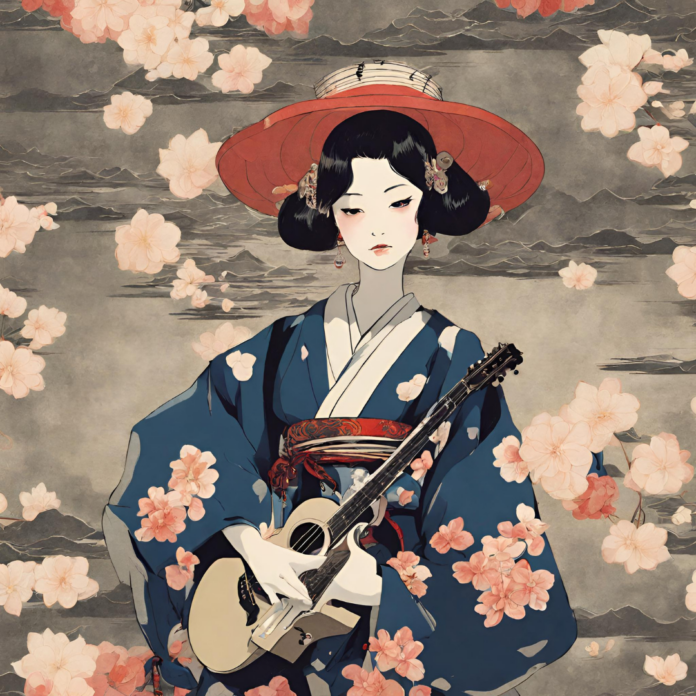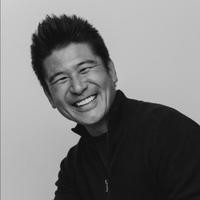Despite Japan being the world’s second largest music market, it remains one of the most challenging and misunderstood industries in the world. But what makes the Japanese music market so unique and difficult to break into?
True Hollywood Talk attended a fascinating panel talk that deeply explored Japanese record labels and publishing infrastructures, fandom culture, and physical CD and DVD sales (yes, they still exist!) and its impact on the local market We will break down and take a look into the various and deeply unique cultural processes (Japanese record label and publishing infrastructures, fandom culture, physical CD and DVD sales, etc.) and its impact on the local market.
Hosted by Jonathan Streetman, a PR strategist at Rock Paper Scissors agency, the panel, “Demystifying Japan: The World’s Second Largest Music Market” consisted of a well-curated list of panel members: Kenneth Kobori of SURF Music, Tamayu Takayami of Copetin, and Elisa Watanbe of Ultra Music Publishing / Helix Records.
Japanese ‘Fan’ Culture and Idolism
Kicking off the panel, Streetman chose to dive into “idol culture” in Japan and what it means to be a “fan” and a “super fan,” and what makes the fans do what they do.
Kobori, who has spent over 20 years as a music producer in Tokyo and New York, was the first to weigh in, explaining that Japan’s fandom culture is very unique, where a lot of the fans are extremely diehard. He continued by saying that “physical copies” still account for 75% of all sales in the Japanese music industry.
“One fan would buy 200 CDs of their favorite artist(s) or idol, and at times, there’s these live show tickets you get inside the physical albums…and they get to present that and shake the hands of these artists,” he shared as an example. “Loyalty is a huge thing in Japan. Once you start rooting for an artist that you support for a very long time, it’s almost equivalent to the feeling of helping [that artist] develop and you’re growing with them. It’s a different feeling,” he added.
Unpacking that further, Kobori distinguished U.S. music culture, noting the difficulty in parsing through music artists because of how prevalent digital streaming platforms are in leading the charge of artist visibility and exposure.
“It’s hard for fans to really know who is singing the song, despite recognizing the song. In Japan, you really follow them and believe in these artists and whatever genre of music they product. It’s a very loyal fandom culture,” he continued, adding that “[t]hese fans would want very different version of the song, even if it’s just one song, an idol group would release five different covers of it.”
This alone, according to Kobori, incentivizes the fan to collect all five versions, hoping there’s a “handshake ticket” in at least one of them. Takayami, however, wanted to further explore Kobori’s perspective on Japanese fandom and how Japanese people actually become fans.
“I think that culturally, we are (and were) indoctrinated to this fan culture early on. I remember having my first idol at five years-old, and I used to imitate and do the choreography, wanting to be just like them. This is something that the culture itself really promotes,” Takayami added.
Japanese Charm of ‘Imperfection’ and Going Global
Unlike the United States, Japan values “imperfection” and “approachability” in idols over “perfection,” and they have the karaoke industry to thank for driving that success due to its cultural importance and lucrative business model for artists.
Takayami pointed out the generational cycle of this culture and how it’s passed on from parents to children. “I think that a lot of it is because it’s cyclical, where the production companies in Japan build these idols, because it’s so lucrative. We come from this idol culture where we worship idols, and because its profitable and consumers continue to enable this.”
These idols, according to Takayami, become the business in terms of artist development because these huge companies invest in that artist’s development. With a pool of talented idols that heavily promote Japan’s music culture, there are still those persons of influence whom, like U.S. influencer culture, drive a huge amount of traffic directly to these artists and brands, including fans that are willing to line up at a restaurant hoping they can see their music idol living their everyday human life.
“SXSW is perfect for that,” Streetman inserted. Agreeing with her two other panelists, Watanbe highlighted another interesting mechanism that distinguishes Japanese idolism.
“You’re not seeing [idolism] as much in the U.S., because I think nowadays with TikTok, everyone wants ‘something’ – someone you can relate to, someone that seems like they write their own music in their bedroom – but in Japan, it’s so much more about someone whose almost ‘untouchable’, and that’s a very different concept. In the Asian market, it’s very unique because you want someone who’s so far away, someone that you can really truly idolize.”
Watanbe currently serves as the Senior Director of A&R at Ultra Publishing / Helix Records. In addition to bringing artists, writers, and producers into their label and publishing company, she works with a lot of Asian artists/writers/producer in putting writing camps together and pitch competitions.
“I think the whole ‘idol’ concept is not to have ‘perfection’ in Japan,” said Kobori in agreement with Watanbe. “If you’re too good, you usually don’t have as many fans…but if you can’t really sing very well, it’s more like they cheer you on. They buy your goods, they buy your CD covers so that eventually you could get elected to be in the center of the next song for the music video.”
Kobori described this concept similar to a parent raising a child. “You’re helping them grow with you,” distinguishing the U.S. perspective on artist development where if you can’t sing or are less musically inclined, that artist is unlikely to get into a top female music group, even in Korea.
“…but in Japan, it’s very weird. It’s almost as if the worse you are, the more fans you’re able to establish and connect with.”
Takayama, the founder of Copetin, is also an entertainment lawyer who specializes in music, connecting Japan’s entertainment and music industry with other global markets. She shared with SXSW attendees that she has two main pillars to her business – inbound into Japan, strategizing to curate the right lineup for what’s most appropriate for the Japanese market, and second, A&R, where she strategizes and curate’s the right lineup, helping to develop Japanese artists for global entry into the music industry.
“I’m a storyteller of artists, figuring out a strategy that would resonate in the U.S. or globally, and trying to translate that culture by putting a filter on that is digestible to an audience here in Japan,” she remarked.
Many people, according to Takayama, know her best as a talent buyer for Creative Man and booking Summer Sonic Festival, Japan’s largest international festival running strong for more than 20 years. She admitted that when working to develop these artists to break into these global markets, there’s a lot of comparison to K-Pop, and of course, BTS and BLACKPINK serving as the perfect reference points.
“I look at the ingredients, and because in Japan, we like imperfection and the fact that you’re approachable. So, I have all of those approachable and imperfect qualities of the artists I’m working with, that I’m now supposed to translate into something that’s ‘culturally unique.'” In other words, Takayama’s day-to-day challenge in working with artists is finding that perfect balance of cultural uniqueness between Japan and the global market where ‘imperfection’ is actually the charm.
Adapting to Western Music Culture
When it comes to Japan integrating elements from Western music, Watanbe branched off of Kobori’s previous statement, focusing on the U.S. creative side.
“We work so heavily in K-Pop, and nowadays, I think a lot of people in the music industry are working really heavily in K-Pop. The one difference that I see, to Ken’s point, is that when it comes to K-Pop and working with a lot of international writers and producers, they’ll take the best top liners from Stockholm, and maybe the best producers from the UK, or even the best hip-hop beats from the U.S. – and they make that what K-Pop is today, which is amazing.”
She shared her belief that Japan has a desire to embrace that very model, but they need to be doing more of it in order to expand globally. “I think it’s just a matter of time, if they take the right steps to get there but that’s where we’re lagging behind a little bit.”
Japan, according to Takayma is “hyper domestic,” with a lot of its music targeting towards the domestic market. “I mean, I think 80% of the market, I think seems to be Japanese. From tours, you only have 20% of international music coming in, so the audience is exposed to more domestic music. And then, if your ears are accustomed hearing Japanese, the lyrics about our Japanese culture, and if it’s marketed towards a Japanese audience, it just becomes very insulated.”
Streetman inquired further about the frequency in which she sees artists singing in Japanese, which was affirmed by Takayama.
“They sing in Japanese, because you have to sing to a Japanese audience. I do think the culture is traveling a little bit now, because I see the Coachella lineup and when you talk about those artists, the commonality here is that they primarily sing in Japanese. But it resonated with the bookers at Coachella, so I think to take it a step further, I will say that at least an English hook is needed, because you want to sing the hook together for a live experience,” she replied.
Takayama says that she usually encourages her artists to have some component of English. She also admitted to being very strict about the pronunciation as to how to pronounce things, where she spent “numerous hours vocal producing the right English.”
What’s Next for Japanese Music?
As the panel concluded, Streetman asked each of the panelists for their advice to up-and-coming artists looking to break into the Japanese market.
“We’re Just as Competitive in the Global Market” – Kenneth Kobori
At the end of the day, Konori says that Japan can be just as competitive in the global music market – not just in revenue, but by sound and popularity.
Kobori also added that if these lead publishing systems want the song bad enough, he and SURF Music have found through successfully placing over 20 different artists, a lot of them have been able to be convinced to lowering the lyrics percentage by not 50%, but equal splits with amongst all the creators.
“Japanese producers don’t really sign publishing deals, because the management of these artists in most cases already has a publishing company, which we have to abide by in working with their lead publishing system. But, that is also changing. I think a lot of Western producers are being more flexible, just so they can get their foot in the door. Let’s say for example, your first hit, you go with the lead publishing system, which is not ideal, but once you make that a hit from there, you now have leverage, and from the next song, you can start negotiating.”
“I think we are open to change now, and we really have to challenge the current systems to make it.”
“There’s A Lot of Missed Opportunities For Japanese Artists in the U.S.” – Elisa Watanbe
Watanbe said she’s really hoping to see more collaboration internationally, specifically having more U.S. writers and producers out in Japan.
“I’d love to see more Japanese artists out in the United States. I think there’s a lot of missed opportunity right now, and there should be a lot more interest in Japan. Everyone’s going to Japan, everyone wants to vacation in Japan right now,” she explained, adding that she encourages a lot of her writers and producers to visit Japan to elevate the production and writing quality.
“This is really the crunch time for writers and producers. I think in the next 10 years, a lot of people are going to be tapping into the Japanese marketplace. So I really encourage a lot of writers and producers to really be early in that conversation.”
“A Successful Hit in Japan Should Mirror the TV Binging Formula” – Tamayu Takayama
Takayama shared that in order to have a huge hit in Japan, it’s important that the music is emotional, something that the listener is able to relate and connect to.
She presented the example of binge watching a TV series, where “you hear this song over and over again, and it becoming super infectious. I think we just need to put in that sauce with the international collaboration camps that we do by having the right cultural ingredient and then having the right platforms to be able to amplify that.”












